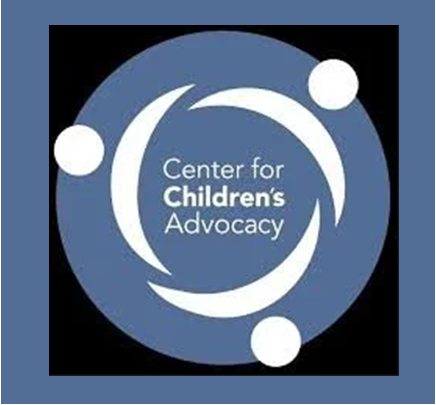by Emma Buth
Pay equity has been a hot topic in recent national debates. We even observe gender pay discrepancies in the workforce right here in Connecticut.
There is a drive today not only to combat this problem, but many others. Pay equity, the wage gap, and what is coined ‘the motherhood penalty,’ are metrics frequenting our news more and more. We all want to ensure women receive equal treatment when finding a job and while working. However, there is another measurement yet to be termed and quantified that further documents workforce inequalities. Often it fails to come up on our radar, but it takes an economic toll on women, businesses, and the economy alike. 
Do males and females with comparable education and equal years of professional experience record salary differences? When one (often the female but possibly, or even increasingly, the male) has paused their career for caregiving, they suffer reduced pay for the remainder of their career or are sidelined entirely.
The Center for Work-Life Policy finds a woman’s earning power declines by 11 percent when having a gap in employment of less than a year. This increases to 37 percent for those who have been out of the workforce for over three years (Helping Women Opt-in 2018). Similar to the effects of “the motherhood penalty”, smart women, with experience, are making much less relative to peers (male or female with equivalent degrees and years of experience) when starting their careers once again.
One firm, a social enterprise launched in Connecticut, Untapped Potential Inc., is working to remove barriers that keep those with a gap sidelined. It is estimated that Connecticut women are paid just 83 cents for every dollar a man makes, women of color experience an even greater disparity in pay (CWEALF 2015). It’s projected that a woman cannot expect to earn the same as a man for the same job within our state until the year 2061! Since these figures fail to include the variation in income of equivalently educated and experienced workers underemployed (or un-engaged), Founder Candace Freedenberg contemplates whether the true pay equity is being captured.
 While pay equity details that a woman should be paid the same as a man when doing equal amount of work in the same job, the gender wage gap differs. It describes the measured statistical difference in income between men and women. In Connecticut, the wage gap results in full time working women losing collectively $15 billion (Connecticut Women and the Wage Gap 2017).
While pay equity details that a woman should be paid the same as a man when doing equal amount of work in the same job, the gender wage gap differs. It describes the measured statistical difference in income between men and women. In Connecticut, the wage gap results in full time working women losing collectively $15 billion (Connecticut Women and the Wage Gap 2017).
Note the use of the qualifier ‘full time working women’. The Center for Talent Innovation highlights that 30 percent of working mothers choose to opt-out of full employment to manage work and family. During the opt-out years and beyond women experience a pay gap within the pay gap down the line. This overall gap may be tied to the employers relying on the historical salary question, and exclude those who have taken a break from their careers.
It is critical to observe that not all of those investing in higher education are taking part in the workforce. A Vanderbilt study concludes that the, “full-time employment rate for MBA moms who earned bachelor’s degrees from a tier-one institution is 35 percent” (Wolf 2013). Loss of 65 percent of educated professional women from a subset of higher universities has a measurable impact to an economy that critically relies on innovation.
Neither the wage gap nor the motherhood penalty take into account the many who have paused their careers to raise our nation’s next generation. Opt-outers or those who have left their job, find difficult barriers to overcome in order to get back in the workforce. Since 2000, 25- to 29-year-old women having a bachelor’s degree or higher college degree outnumber those attained by their male counterparts by ten percent (The Condition of Education 2017).
Educated and experienced women re-joining the workforce often face difficulties due to a lack of connections and bias when looking for jobs. Roughly 80 percent of jobs come through networking, and once women fall out of the know-to circle, it is much harder to get back on the career path (Adler 2016). Current job board systems sift out not only those with a gap but those missing key terms that rely on recent work engagement. These factors along with the fact that the prevailing requirements of industrial-age workplace modes in the internet-age largely keep mothers from seeking employment during their caregiving years.
That is where Untapped Potential (UP) comes in. Based in Hartford, the Benefit Corporation offers a programmatic approach to remove the barriers that keep educated experience professionals from engaging in our nation’s economic engine. By creating a network of support, a skills portal to ramp up with latest tools and short courses and crucial mid-career engagements (Flex-returns) with forward-thinking companies, UP’s three prong solution tactically addresses the barriers of lack of contacts, skill currency and confidence.
Why would women who have opted out be so crucial to the work environment?
Freedenberg explains that businesses and our GDP ultimately struggle when these smart educated women are left out of the economy. As the Hamilton Project relates, “[B]arriers to participation by women also act as brakes on the national economy, stifling the economy’s ability to grow.” The lives and fortunes of women in the workplace affect us all. Untapped Potential curates talent not currently available in the marketplace, and businesses benefit from that high caliber talent that is eager to engage and grow the economy.
Ted Pizzo, SVP of Lockton companies, stressed how vital UP’s services are to the workforce by contending that, “Untapped Potential’s approach is almost like a surgical strike, they create a returnship for business that fuses talent to business needs.”
UP will host upcoming educational seminar titled the “Economic Value of Returning Women to YOUR Workforce Pipeline” where businesses can meet our talent in a speed interview format. The third event of this kind is planned for March 9 in Hartford. The event is sponsored by Travelers and Quinnipiac Corporate Training. The event works to overcome the barrier that prevents hiring managers from ever seeing the caliber of talent that would inevitably be missed in the jobs board/keyword search scenario.
By pricing the Flex-returns at a competitive rate UP hopes to reduce the friction for companies to open their workplace to a mid-career internship with a high potential candidate that is indeed missing the latest key terms from their resume. Companies can learn how they can host a Flex-Returner at www.upotential.org. Doing so works to return women to the company’s pipeline for senior roles, impacting gender equity over one’s career.
_______________________
Emma Buth, an aspiring journalist, is a senior at Avon High School interning for Untapped Potential as part of the “Achieve" Avon High School Internship Program.

 It is impossible to assess the AT&T / Time Warner merger without taking into consideration the impact that the Trump Administration FCC’s proposed net neutrality rollback would have. AT&T is the third-largest broadband provider in the United States, with 15.7 million subscribers. And they own DirecTV, by far the largest satellite television provider, with over 20 million subscribers. If the Trump Administration is successful in fully implementing its net neutrality repeal, but is unsuccessful in blocking the AT&T / Time Warner merger, it would create a nightmare scenario for consumers.
It is impossible to assess the AT&T / Time Warner merger without taking into consideration the impact that the Trump Administration FCC’s proposed net neutrality rollback would have. AT&T is the third-largest broadband provider in the United States, with 15.7 million subscribers. And they own DirecTV, by far the largest satellite television provider, with over 20 million subscribers. If the Trump Administration is successful in fully implementing its net neutrality repeal, but is unsuccessful in blocking the AT&T / Time Warner merger, it would create a nightmare scenario for consumers.


 Opportunity: Talent
Opportunity: Talent  Making the Connection
Making the Connection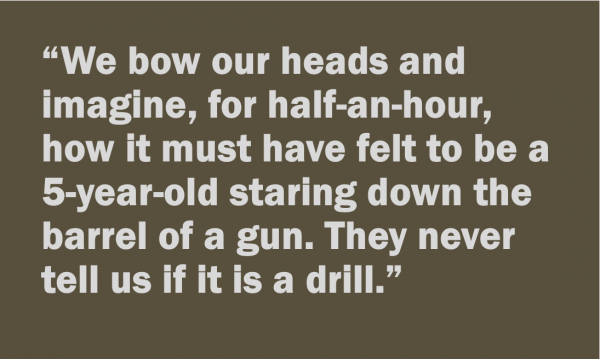 But those weren’t the answers I was really looking for. I didn’t want a death count. I wanted an estimate of the number of years of life lost. I wanted a numerical answer to how many times over the next 40 years their parents would stare into the smiling eyes of their 5-year-old’s school photo and try to imagine them with acne or facial hair or wedding dresses. I wanted a hypothesis at the number of prescriptions filled out for PTSD from the other students. I didn’t want to know the weapon. I wanted to know how he had come across it. I wanted to know how their lockdown drill had failed as naively as a duck-and-cover method from the atomic bomb.
But those weren’t the answers I was really looking for. I didn’t want a death count. I wanted an estimate of the number of years of life lost. I wanted a numerical answer to how many times over the next 40 years their parents would stare into the smiling eyes of their 5-year-old’s school photo and try to imagine them with acne or facial hair or wedding dresses. I wanted a hypothesis at the number of prescriptions filled out for PTSD from the other students. I didn’t want to know the weapon. I wanted to know how he had come across it. I wanted to know how their lockdown drill had failed as naively as a duck-and-cover method from the atomic bomb.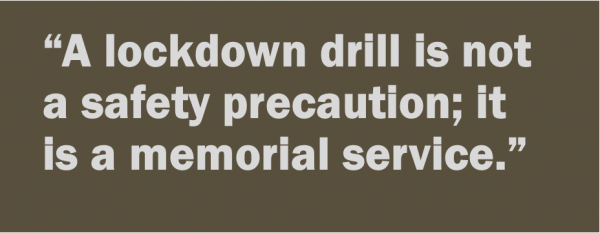
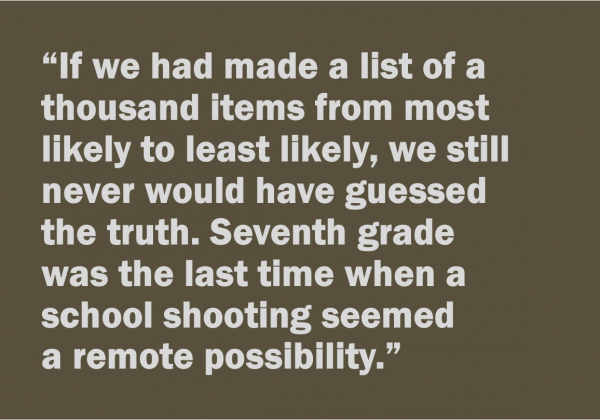 I am a girl who is going to be a teacher. Teachers don’t take an oath to protect and serve, yet they are the front lines in a battle that America is losing. There isn’t a single teacher – or student – in America who hasn’t wondered what they would do in a school shooting. I’d be willing to bet that most of the teachers, administrators, and security guards around the country have come to the same grim conclusion: that there is a unspoken clause in their job description.
I am a girl who is going to be a teacher. Teachers don’t take an oath to protect and serve, yet they are the front lines in a battle that America is losing. There isn’t a single teacher – or student – in America who hasn’t wondered what they would do in a school shooting. I’d be willing to bet that most of the teachers, administrators, and security guards around the country have come to the same grim conclusion: that there is a unspoken clause in their job description.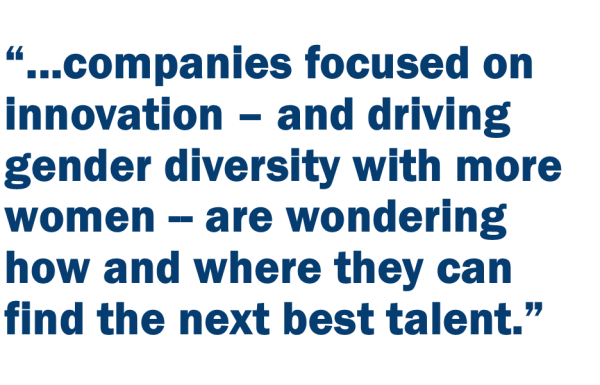 But why girls?
But why girls?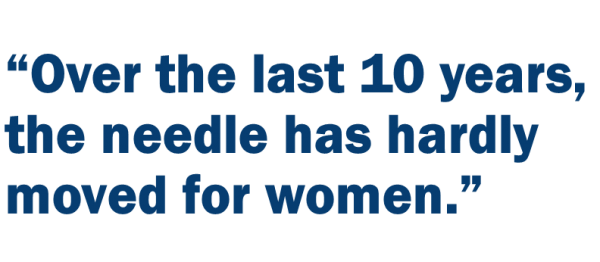 Confidence, we’ve heard, comes from execution. Early results from
Confidence, we’ve heard, comes from execution. Early results from 
 While pay equity details that a woman should be paid the same as a man when doing equal amount of work in the same job, the gender wage gap differs. It describes the measured statistical difference in income between men and women. In Connecticut, the wage gap results in full time working women losing collectively $15 billion (Connecticut Women and the Wage Gap 2017).
While pay equity details that a woman should be paid the same as a man when doing equal amount of work in the same job, the gender wage gap differs. It describes the measured statistical difference in income between men and women. In Connecticut, the wage gap results in full time working women losing collectively $15 billion (Connecticut Women and the Wage Gap 2017).
 Sometimes these complaints are reinforced with evidence of adults’ lack of basic knowledge. For instance, after the national political conventions in 2016, just 37 percent of Americans
Sometimes these complaints are reinforced with evidence of adults’ lack of basic knowledge. For instance, after the national political conventions in 2016, just 37 percent of Americans 
 A donor, for example, may want to ensure that people in our community do not go hungry. Rather than trying to figure out how to get meals to hungry people on their own, the donor gives money to a local food pantry that has programs to feed the hungry. In that way, the food pantry connects the donor to the outcome he or she is seeking.
A donor, for example, may want to ensure that people in our community do not go hungry. Rather than trying to figure out how to get meals to hungry people on their own, the donor gives money to a local food pantry that has programs to feed the hungry. In that way, the food pantry connects the donor to the outcome he or she is seeking.
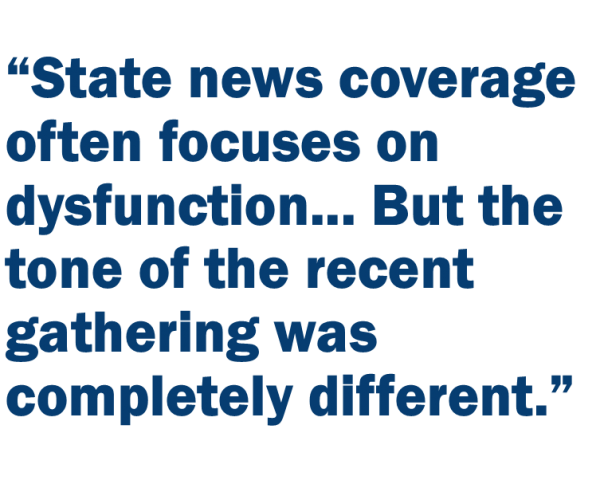 But the tone of the recent Saturday gathering was completely different. While we all acknowledge that our state faces tough issues, we believe that there are ways “we the people” can address them, working with each other and public officials in more inclusive and democratic ways.
But the tone of the recent Saturday gathering was completely different. While we all acknowledge that our state faces tough issues, we believe that there are ways “we the people” can address them, working with each other and public officials in more inclusive and democratic ways.
 Aetna is also working with groups like Meals on Wheels America to combine improved access to healthy food with innovative models for patient care coordination. Aetna recently
Aetna is also working with groups like Meals on Wheels America to combine improved access to healthy food with innovative models for patient care coordination. Aetna recently 




